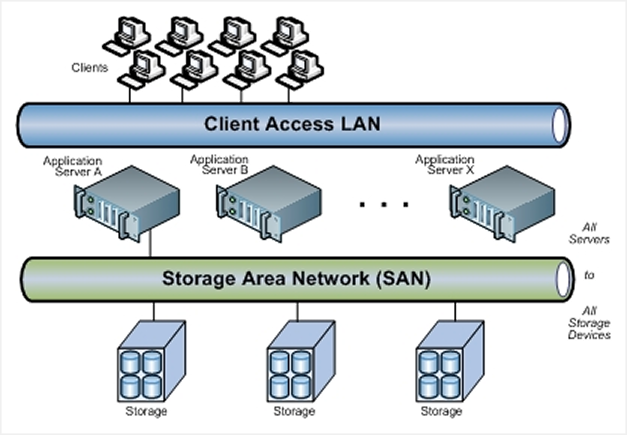A Storage Area Network (SAN) is a specialized, high-speed network that provides network access to storage devices. SANs are typically composed of hosts, switches, storage elements, and storage devices that are interconnected using a variety of technologies, topologies, and protocols. SANs may span multiple sites.
SANs are often used to
A SAN presents storage devices to a host such that the storage appears to be locally attached. This simplified presentation of storage to a host is accomplished through the use of different types of virtualization.

SANs perform an important role in an organization's Business Continuity Management (BCM) activities (e.g., by spanning multiple sites). SANs are commonly based on a switched fabric technology. Examples include Fibre Channel (FC), Ethernet, and InfiniBand. Gateways may be used to move data between different SAN technologies.
Fibre Channel is commonly used in enterprise environments. Fibre Channel may be used to transport SCSI, NVMe, FICON, and other protocols.
Ethernet is commonly used in small and medium sized organizations. Ethernet infrastructure can be used for SANs to converge storage and IP protocols onto the same network. Ethernet may be used to transport SCSI, FCoE, NVMe, RDMA, and other protocols.
InfiniBand is commonly used in high performance computing environments. InfiniBand may be used to transport SRP, NVMe, RDMA, and other protocols.








